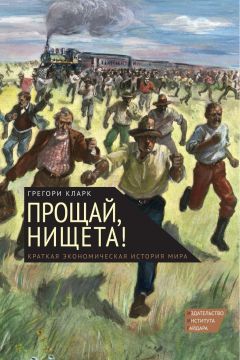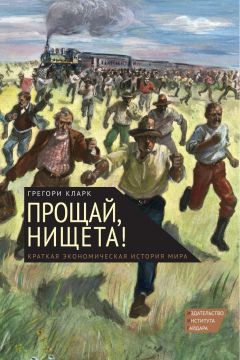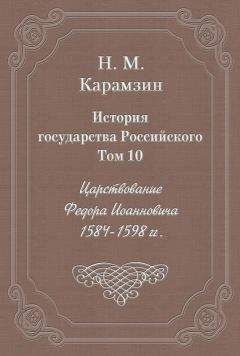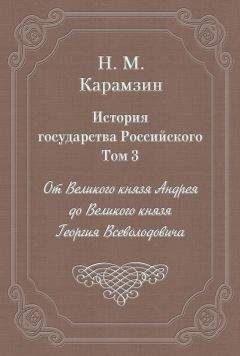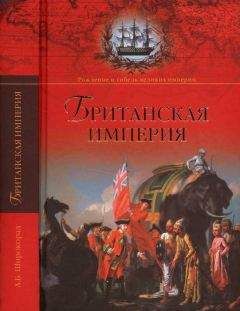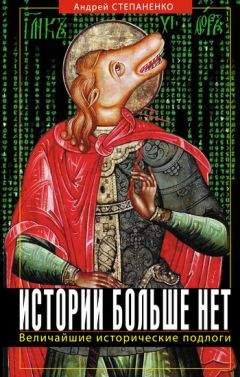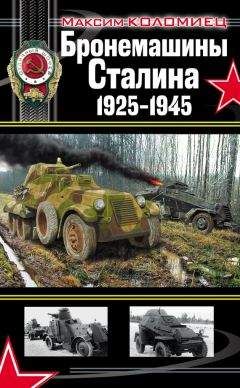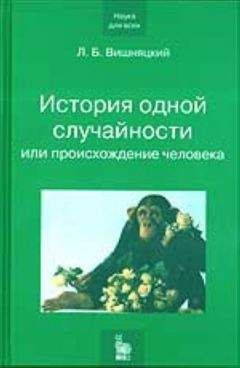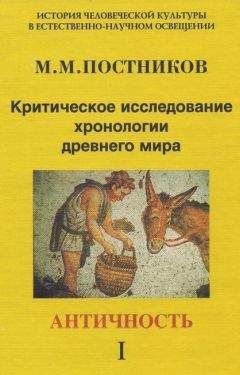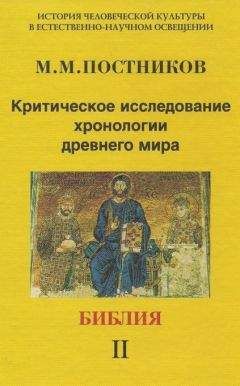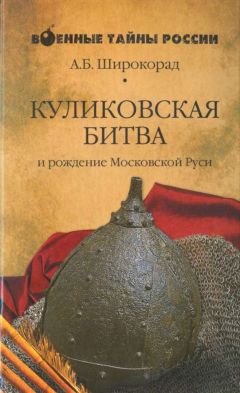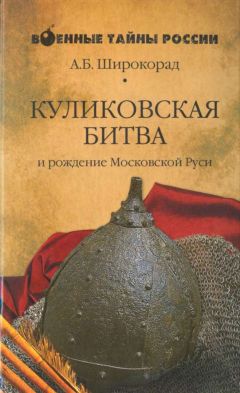Леонид Вишняцкий - Неандертальцы: история несостоявшегося человечества
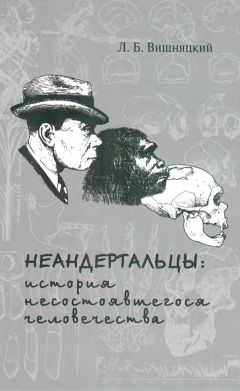
Скачивание начинается... Если скачивание не началось автоматически, пожалуйста нажмите на эту ссылку.
Жалоба
Напишите нам, и мы в срочном порядке примем меры.
Описание книги "Неандертальцы: история несостоявшегося человечества"
Описание и краткое содержание "Неандертальцы: история несостоявшегося человечества" читать бесплатно онлайн.
Неандертальцы не были нашими прямыми предками, но, тем не менее, они наши ближайшие родственники, и у нас с ними очень много общего. Называть их тупиковой ветвью эволюции, по мнению автора этой книги, столь же неверно, как неверно применять этот эпитет по отношению, скажем, к коренному населению Тасмании и другим первобытным популяциям людей, уничтоженным в результате европейской колонизации. Скорее, неандертальцев следует считать "дублерами" гомо сапиенс, запасным вариантом антропогенеза. Почему же история выбрала нас, а не их? Как происходил этот выбор? Что сыграло в нем решающую роль? Был ли он предопределен заранее или зависел больше от привходящих и потому во многом случайных обстоятельств? Автор рассматривает эти и многие другие вопросы, попутно суммируя и в доступной для неспециалистов форме излагая то, что известно сейчас о происхождении и эволюционной истории неандертальцев, их умственных и языковых способностях, материальной и зарождавшейся духовной культуре, о динамике их расселения и причинах вымирания. По каждой из перечисленных тем учтены наиболее интересные и важные сведения, имевшиеся в распоряжении палеоантропологии, археологии и смежных с ними наук на середину 2010 г. Книга адресована всем, кого занимает древнейшее прошлое человечества - от академиков до студентов и школьников старших классов.
Holloway R. L., Broadfield D. C., Yuan M. S. Brain Endocasts: The Paleoneurological
Evidence. (The Human Fossil Record, vol. III). Hoboken, N. J.: Wiley & Sons, 2004.
Holloway R. L. Brain fossils: Endocasts // L. R. Squire (ed). Encyclopedia of Neuroscience. Oxford: Academic Press, 2009. P. 353-361.
Holton N. EFranciscus R. G. The paradox of a wide nasal aperture in cold adapted Neandertals: a casual assessment // JHE. 2008. N 55. P. 942-951.
Horan R. D., Bulte E., Shogren J. F. How trade saved humanity from biological exclusion: an economic theory of Neanderthal extinction // JEBO. 2005. N 58. P. 1-29.
Houghton P. Neandertal supralaryngeal vocal tract // AJPA. 1993. N 90. P. 139- 146.
Howell F. C. The place of Neanderthal Man in human evolution // AJPA. 1951. N9. P. 379-416.
Howell F. C. Pleistocene glacial ecology and the evolution of "classic'' Neandertal man // SJA. 1952. N 8. P. 377-410.
Howell F. C. The evolutionary significance of variation and varieties of «Neanderthal» man // QRB. 1957. N 32. P. 330-347.
Howells W. W. Neanderthals: names, hypotheses, and scientific method // AA. 1974. N76. P. 24-38.
Hrdlicka A. The Neanderthal phase of man // JRAI. 1927. N 57. P. 249-274.
Hubbe M, Hanihara Г., Harvati K. Climate signatures in the morphological differentiation of worldwide modern human populations // AR. 2009. N 292. P. 1720- 1733.
Hublin J.-J. Quelques caracteres apomorphes du crane neandertalien et leur interpretation phylogenetique // CRASP. 1978. N 287. P. 923-926.
Hublin J.-J. Caracteres derives de la region occipito-mastoi'dienne chez les Neandertaliens // E. Trinkaus (ed). L'Homme de Neandertal. Vol. 3. L'Anatomie. Liege: ERAUL. 1988. P. 67-73.
Hublin J.-J. Climatic changes, paleogeography and the evolution of Neanderthals // T. Akazawa, K. Aoki, O. Bar-Yosef (eds). Neanderthals and Modern Humans in Western Asia. New York: Plenum Press, 1998. P. 295-310.
Hublin J.-J. Modern-nonmodern hominid interactions: A Mediterranean perspective // O. Bar-Yosef and D. Pilbeam (eds). The Geography of Neandertals and Modern Humans in Europe and the Greater Mediterranean. Cambridge: Harvard University Press, 2000. P. 157-182.
Hublin J.-J. Neandertal as another humankind: where are we now? // TN. 2006. N2. P. 55-59.
Hublin J.-J. Origine et evolution des Neandertaliens // B. Vandermeersch, B. Maureille (dir). Les Neandertaliens. Biologie et cultures. Paris: Editions du CTHS, 2007. P. 95-107.
Hublin J.-J. The origin of Neandertals // PNAS. 2009. N 106. P. 16022-16027. Hublin J.-J., Bailey S. E. Revisiting the last Neandetals // N. J. Conard (ed). When Neanderthals and Modern Humans Met. Tubingen: Kerns Verlag, 2006. P.105-128.
Hublin J.-J., Weston D., Gunz P., Richards M, Roebroeks W., Glimmerveen J., Anthonis L. Out of the North Sea: the Zeeland Ridges Neandertal // JHE. N 57. 2009. P. 777-785.
Humphrey N. Cave art, autism, and the evolution of the human mind // CAJ. 1998. N8. P. 165-191.
Hutchinson D. L.,Larsen C. S., Choi I. Stressed to the max? Physiological perturbation in the Krapina Neandertals // CAn. 1997. N 38. P. 904-914.
Huxley Т. H. Further remarks upon the human remains from the Neanderthal // NHR 1. 1864. P. 429-446.
Inizan M.-L., Roche H., Tixier J. Technology of Knapped Stone. Meudon: C. R. E. P., 1992.
Jaubert J., Maureille В., Turq A. A Stratigraphic and chronological revision of Neanderthal burials in Western Europe: Chronicle of a long-awaited aging // PA. 2010. A16.
Jelinek J. Neanderthal Man and Homo sapiens in Central and Eastern Europe // CAn. 1969. N 10. P. 475-503.
Jolly C. J. A proper study for mankind: Analogies from papionin monkeys and their implications for human evolution // YPA. 2001. N 44. P. 177-204.
Johanson Z)., Edgar B. From Lucy to Language. New York: A Peter N. Nevraumont Book/Simon & Schuster, 1996.
Jones M. Moving North: Archaeobotanical evidence for plant diet in Middle and Upper Paleolithic Europe // J.-J. Hublin, M. P. Richards (eds). The Evolution of Hominin Diets: Integrating Approaches to the Study of Palaeolithic Subsistence. Springer, 2009. P. 171-180.
Jones S. C. The Toba supervolcanic eruption: Tephra-fall deposits in India and paleoanthropological implications // M. D. Petraglia, B. Allchin (eds). The Evolution and History of Human Populations in South Asia. New York: Springer, 2007. P. 173- 200.
Kay R. F., Cartmill M, В alow M. The hypoglossal canal and the origin of human vocal behavior // PNAS. 1998. N 95. P. 5417-5419.
Kelly R. L. The Foraging Spectrum. Diversity in Hunter-Gatherer Lifeways. Washington: Smithsonian Institution Press, 1995.
Kimbel W. H. The species and diversity of Australopiths // Handbook of Paleoanthropology, vol. 3. Berlin; Heidelberg; New York: Springer, 2007. P. 1539-1573. King W. The reputed fossil man of the Neanderthal // QJS. 1864. N 1. P. 88-97. Kitchen A., Toups M. A., Light J. E., Reed D. L. Genetic analysis of human head and clothing lice indicates an early origin of clothing use in archaic hominins // AJPA. 2010. N 141 (Supplement 50). P. 143-144
Kittler R., Kayser M, Stoneking M. Molecular evolution of Pediculus humanus and the origin of clothing // CB. 2003. N 13. P. 1414-1417.
Klaatsch Н. Der Werdegang der Menschheit und die Entstehung der Kultur. Berlin: Deutsches Verlagshaus Bong und Co, 1920.
Klein R. G. The Human Career. Human Biological and Cultural Origins. Chicago/ London: University of Chicago Press, 1989.
Klein R. G. The archaeology of modern human origins // EA. 1992. N 1. P. 5-
14.
Klein R. G. Anatomy, behavior, and modern human origins // JWP. 1995. N 9. P. 167-198.
Klein R. G. Southern Africa and modern human origins // Journal of Anthropological Research. 2001. N 57. P. 1-16.
Klein R. G. Out of Africa and the evolution of human behavior // EA. 2008. N 17. P. 267-281.
Koenigswald G. H. R. (ed). Hundert Jahre Neanderthaler. Cologne; Graz: Bohlau- Verlag, 1958.
Koller J., Mania D. High-tech in the Middle Paleolithic: Neanderthal-manufactured pitch identified // EJA. 2001. N 4. P. 385-397.
Krantz G. S. A reappraisal of neandertal taxonomy // J. L. Franzen (ed). 100 Years of Pithecanthropus. The Homo Erectus Problem. Frankfurt: E. Schweizerbart, 1994. P. 327-331.
Krause J., Lalueza-Fox C., Orlando L., Enard WGreen R. et al The derived FOXP2 variant of modern humans was shared with Neandertals // CB. 2007a. N 17. P. 1-5.
Krause M, Orlando L., Serre DViola B. et al Neanderthals in central Asia and Siberia // Nature. 2007b. N 449. P. 902-904.
Kuhn S. LStiner M. C. What's a mother to do? The division of labor among Neandertals and modern humans in Eurasia // CAn. 2006. N 47. P. 953-980.
Lahr M. M, Foley R. A. Towards a theory of modern human origins: geography, demography, and diversity in recent human evolution // YPA. 1998. N 41. P. 137- 176.
Laitman J. Г., Heimbuch R. C., Crelin E. S. Developmental change in a basicranial line and its relationship to the upper respiratory system in living primates // AJA. 1978. N 152. P. 467-482.
Lalueza-Fox C. Mitochondrial DNA of an Iberian Neandertal suggests a population affinity with other European Neandertals // CB. 2006. N 16. P. 629-630.
Lalueza-Fox C., Rompler H., Caramelli D., Staubert C., Catalano G., Hughes D., Rohland N., Pilli E., Longo L., Condemi S., de la Rasilla M, Fortea J., Rosas A Stoneking M, Schoneberg Г., BertranpetitУ., Hofreiter M. A melanocortin 1 receptor allele suggests varying pigmentation among Neanderthals // Science. 2007. N 318. P. 1453-1455.
Layton R., Barton R. Warfare and human social evolution // K. J. Fewster, M. Zvelebil (eds). Ethnoarchaeology of Hunter-Gatherers: Pictures at an Exhibition. Oxford: Archaeopress, 2001. P. 13-24.
Lebel S., Trinkaus E., Faure M., Fernandez P., Guerin C., Richter D., Mercier N., Valladas Я., Wagner G. A. Comparative morphology and paleobiology of Middle
Pleistocene human remains from the Bau de l'Aubesier, Vaucluse, France // PNAS.
2001. N98. P. 11097-11102.
Lee S.-H., Wolpoff M. The pattern of evolution in Pleistocene human brain size // Paleobiology. 2003. N 29. P. 186-196.
Leonard W. R., SnodgrassJ. J., Sorensen M. V. Metabolic adaptation in indigenous Siberian populations // ARA. 2005. N 34. P. 451-471.
Lev E., Kislev M. E., Bar-Yosef O. Mousterian vegetal food in Kebara Cave, Mt. Carmel // JAS. 2005. N 32. P. 475-484.
Lewin R. Human Evolution: An Illustrated Introduction. 5th ed. Maiden; Oxford; Carlton: Blackwell, 2005.
Lewin R., Foley R. A. Principles of Human Evolution. 2nd ed. Maiden; Oxford; Carlton: Blackwell, 2004.
Lieberman P. Current views on Neanderthal speech capabilities: A reply to Воё et al. // JP. 2007a. N 35. P. 552-563.
Lieberman P. Human speech: anatomical and neural bases // Can. 2007b. N 48. P. 39-66.
Lieberman PCrelin E. S. On the speech of Neandertal man// LI. 1971. N2. P. 203-222.
Liu HPrugnolle FManica ABalloux F. A geographically explicit genetic model of worldwide human-settlement history // AJHG. 2006. N 79. P. 230-237.
Lukacs В. The lapedo child, the szeleta men, and the convergence to leading cultures // http://www.rmki.kfki.hu/~lukacs/lapedo.html. 2001.
Macaulay VHill C., Achilli A., Rengo C., Clarke D., Meehan W., Blackburn У., Semino ОScozzari R., Cruciani F., Taha AShaari N. K., Raja J. M, Lsmail P Zainuddin Z, Goodwin W., Bulbeck D., Bandelt H.-J., Oppenheimer S., Torroni A., Richards M. Single, rapid coastal settlement of Asia revealed by analysis of complete mitochondrial genomes // Science. 2005. N 308. P. 1034-1036.
Macchiarelli RBondioli LDebehath A., Mazurier ATournepiche J.-F Birch W., Dean C. How Neandertal molar teeth grew // Nature. 2006. N 444. P. 748-751.
Macdougall D. Frozen Earth. The Once and Future Story of Ice Ages. University of California Press, 2004.
MacLarnon A. M, Hewitt G. P. The evolution of human speach: the role of enhanced breathing control // AJPA. 1999. N 109. P. 341-363.
MacLarnon A. M, Hewitt G. P. Increased breathing control: another factor in the evolution of human language // EA. 2004. N 13. P. 181-197.
Madella M, Jones M. К., Goldberg P., Goren Y., Hovers E. The exploitation of plant resources in Amud Cave (Israel): the evidence from phytolith studies // JAS.
2002. N29. P. 703-719.
Maher M. K. Neandertal mandibular traits in modern Homo sapiens II AJPA. 2005. N40. P. 142-143.
Mann ATrinkaus E. Neandertal and Neandertal-like fossils from the Upper Pleistocene//YPA. 1973. N 17. P. 169-193.
Marean C., Kim S. Mousterian large-mammal remains from Kobeh cave // CAn. 1998. N 39 (Supplement). P. 79-113.
MarquetJ., Lorblanchet M A Neanderthal face? The proto-figurine from La Roche- Cotard, Langeais (Indre-et-Loire, France) // Antiquity. 2003. N 77. P. 661-70.
Marshack A. The Neanderthals and the human capacity for symbolic thought: cognitive and problemsolving aspects of Mousterian symbol// O. Bar-Yosef (ed). L'Homme de Neandertal, vol. 5, Liege: ERAUL, 1988. P. 57-91.
Martelli S. A., Steele J. The reconstruction of Neanderthal hyoid position — a new approach using three-dimensional geometric morphometries // AJPA. 2010. N 141 (Supplement 50). P. 165.
Martinez /., Rosa M, J.-L. Arsuaga et al. Auditory capacities in Middle Pleistocene humans from the Sierra de Atapuerca in Spain // PNAS. 2004. N 101. 9976- 9981.
Martinez /., Arsuaga J. L., Quam R., Carretero J. M, Gracia A., Rodriguez L. Human hyoid bones from the Middle Pleistocene site of Sima de los Huesos (Sierra de Atapuerca, Spain) // JHE. 2008. N 54. P. 118-124.
Martinez /., Quam R., Arsuaga J. L., Lorenzo C., GraciaA., Carretero J. M., Rosa M.,Jarabo P. Approche paleontologique de revolution du langage: un etat des lieux // L'Anthropologic. 2009. N 113. P. 255-264.
Подписывайтесь на наши страницы в социальных сетях.
Будьте в курсе последних книжных новинок, комментируйте, обсуждайте. Мы ждём Вас!
Похожие книги на "Неандертальцы: история несостоявшегося человечества"
Книги похожие на "Неандертальцы: история несостоявшегося человечества" читать онлайн или скачать бесплатно полные версии.
Мы рекомендуем Вам зарегистрироваться либо войти на сайт под своим именем.
Отзывы о "Леонид Вишняцкий - Неандертальцы: история несостоявшегося человечества"
Отзывы читателей о книге "Неандертальцы: история несостоявшегося человечества", комментарии и мнения людей о произведении.







